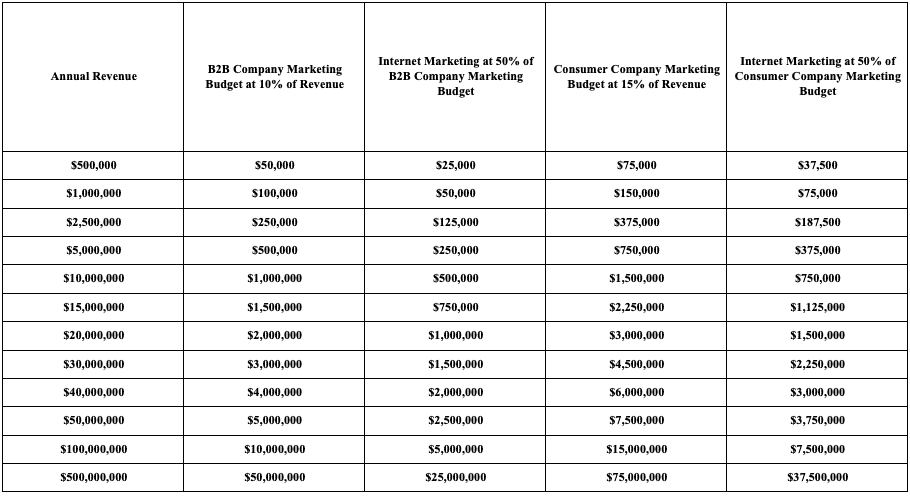How Much Do We Need to Invest in Digital Marketing to Stay Competitive and Grow?
April 29, 2022
Every growing company should be asking this question on at least an annual basis “How Much Do We Need to Invest in Digital Marketing to Stay Competitive and Grow?”. With this blog update, we will answer the question in broad terms and give you some guidance. There is no “exact” answer, and each company is different, but there are some general guidelines to what other companies spend.
What HAS changed in the last year since COVID is that aggressively growing companies have shifted marketing investment from in-person events, like trade shows, to digital marketing and social media.
- The shift from traditional to digital marketing has been strong and keep gaining steam
- Average USA Digital Marketing spending is now at 59% of total advertising, up from 37% in 2016
- The increases cross a wide range of tools including Social Media Marketing. Email marketing, Online Local Search, Display Advertising, Search Marketing, and Mobile Strategies
- In the area of social media, larger companies have rapidly increased their investment, seeing a wide range of benefits, even if ROI measurement remains elusive. For smaller, local companies online search and directories have now totally replaced Yellow Pages. Even with Yellow Pages moving online, they are no match for Google local pages and niche directories in their industry.
- Social media spend now averages 20.8% of overall marketing budget (CMOSurvey.org). A little less for sB2B products companies and a bit more for B2C services companies.
- B2C services companies spend the most on social media, averaging 24% (CMO Survey.org)
If you take a look at “industry averages” here is what typical companies spend in 2022:
Of course, no business is “average” so consider the following points affect the percentage of your revenue that should be spent on advertising.
1. What business are you in?
Consumer retail companies will always spend substantially more on marketing than a B2B manufacturing company. Advertising, even Internet or digital marketing, can be expensive but it is absolutely essential for most retail and local service provider companies. 15% per year is common for these businesses; particularly if they are new to the area or have new products introduced. As your business becomes established, this percentage can be gradually reduced to find the “sweet spot” of marketing ROI.
B2B advertising often requires more targeting than consumer advertising. Television and most radio are usually not appropriate for a medium-sized B2B manufacturing or distribution company as those mediums require mass appeal to stay on the air. Of course, Internet marketing will give “by far” the highest ROI, but these companies also need other lead generation such as networking, industry-specific journal advertising, highly targeted direct mail, catalogs, and trade shows. It’s interesting to note that over 75% of the money our clients move from other advertising into Internet Marketing still comes from Trade Shows. 5% to 7% is a good benchmark of revenue to marketing investment for the average B2B company.
It’s vital is to test, measure and analyze the best percentage for YOUR company. If you’re spending 5% now and find that doubling marketing to 10% percent increases your profit by more than you have invested, you’ve come out ahead. Measure the ROI for each marketing investment and you will eventually know where your sweet spot is for % marketing to revenue.
2. How important is “location” to your business?
It’s tried and true, you either invest in “location” to drive traffic to your business or in “marketing” to get customers in the door. Just check out mall rents to see the result of this theory. A known store in a busy mall may spend no more than 1 to 5 percent of its revenue on advertising, while its sister store in a remote strip mall may spend 10 to 15 percent.
3. What is your competition doing?
If your main competitor is ranked #1 in Google for every search term that would bring you, profitable customers, you can’t afford to let them steal those potential customers that could be yours. If you’re just entering a market and want to take business away from an established company, you’ll need to spend a higher percentage. Many times the older companies have become complacent. We see it on the Web all the time, when we ask potential clients who are their major competitors, they have no idea who is stealing business from them online.
If you are the “Big Dog” in your market and have been a leader for many years, a little research may show that new competitors are using extensive marketing campaigns, particularly Internet Marketing and social media against you. You may have to re-look at your marketing investment.
4. What can your business afford?
Cash is cash, and in the current economic situation, staying in business means having cash to meet payroll, no matter what your marketing needs are. But, that can only work for the short term. Marketing has to continue in every viable business.
Your business plan and marketing plan should have some discussion of the “minimum marketing % of revenue” that starts to drive the business into the death spiral. Most companies start the year with optimistic budgets and then cut marketing mid-year if they are not making the sales. How many know what the lower limit really is? Do you?
5. What does the future hold?
Unlike radio, Television, and print advertising, much of Internet Marketing requires long-range planning and investment. In more traditional mass marketing, you can whip up a great TV ad in a few weeks and air it at your favorite sporting event to drive customers to your business. Google paid ads work much the same way, they are instant, targeted, and you can adjust the spending as you need the business.
Other parts of Internet Marketing like SEO for high Google, Yahoo, and Bing rankings require long-range planning and month after month work to reach and maintain the high first page rankings. Social Media Marketing is the same, you have to invest time and money now to have a following established when you need to get your message out. It’s a constant month after month effort.
Marketing continues to move to digital at a rapid pace. If you wait to invest while your competitors are moving out to get high Google rankings, establish networks on LinkedIn, and optimizing their online paid advertising (pay-per-click) campaigns, you will be left in the virtual dust. If companies are averaging 50% of their marketing budgets to Digital Marketing now, what do you think it will be next year, in 3 years, in 2024? The longer you wait, the higher the online hill will be and the more expensive it will be to catch your competition.






